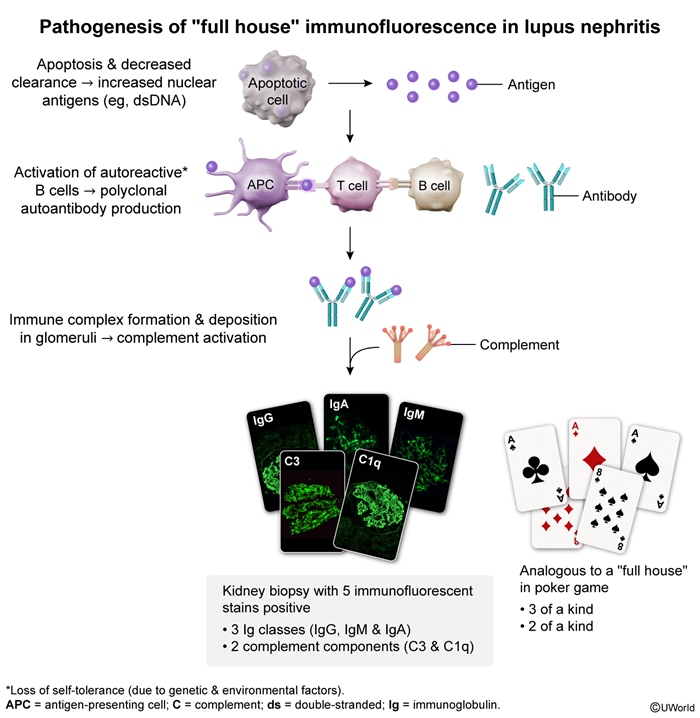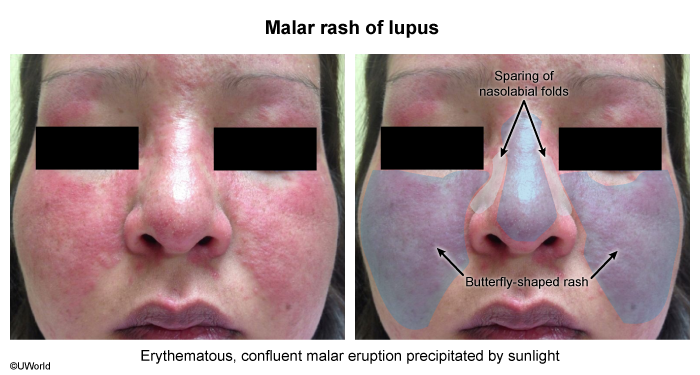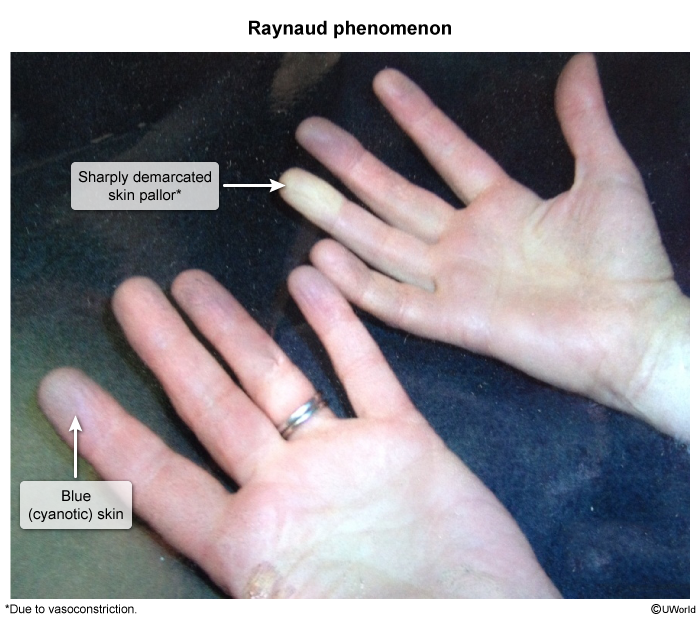Systemic Lupus Erythematous
Article Sections
Introduction
Systemic lupus erythematosus (SLE) is a chronic, multisystem autoimmune disease characterized by the loss of immune self-tolerance resulting in production of autoantibodies against various self-antigens. These autoantibodies form immune complexes that deposit in tissues, leading to inflammation and damage across virtually any organ system. SLE predominantly affects women of childbearing age, with approximately 90% of patients being female. The disease has a highly variable clinical presentation, ranging from mild symptoms such as arthralgia and photosensitive rash to life-threatening organ involvement (eg, renal failure).
Epidemiology
- Incidence: SLE incidence has risen with improved detection of mild disease and is estimated to be between 1 and 25 per 100,000 globally.
- Prevalence: In the United States, prevalence is 20-150 per 100,000, with higher rates among African American, Hispanic, and Native American populations (who also experience more severe disease manifestations).
Continue Learning with UWorld
Get the full Systemic Lupus Erythematous article plus rich visuals, real-world cases, and in-depth insights from medical experts, all available through the UWorld Medical Library.
Figures

Images


